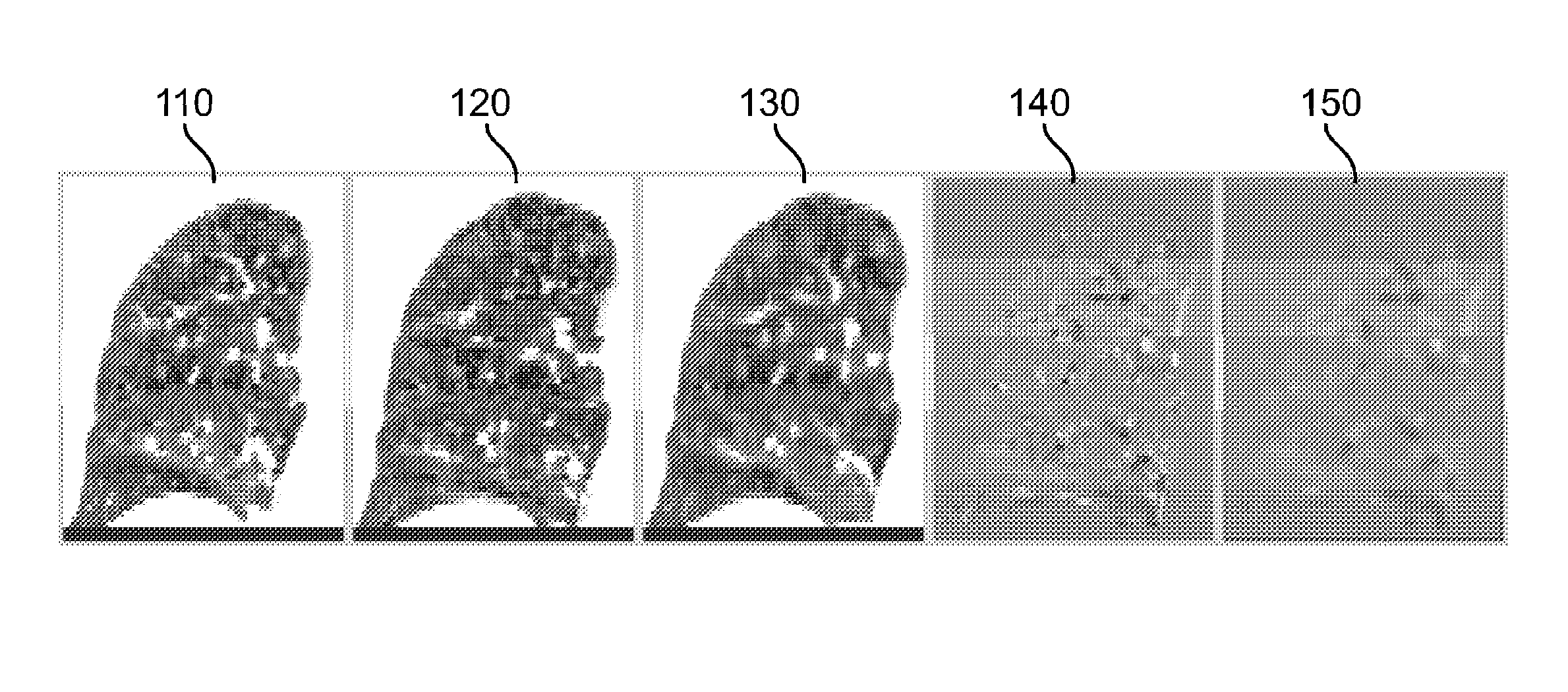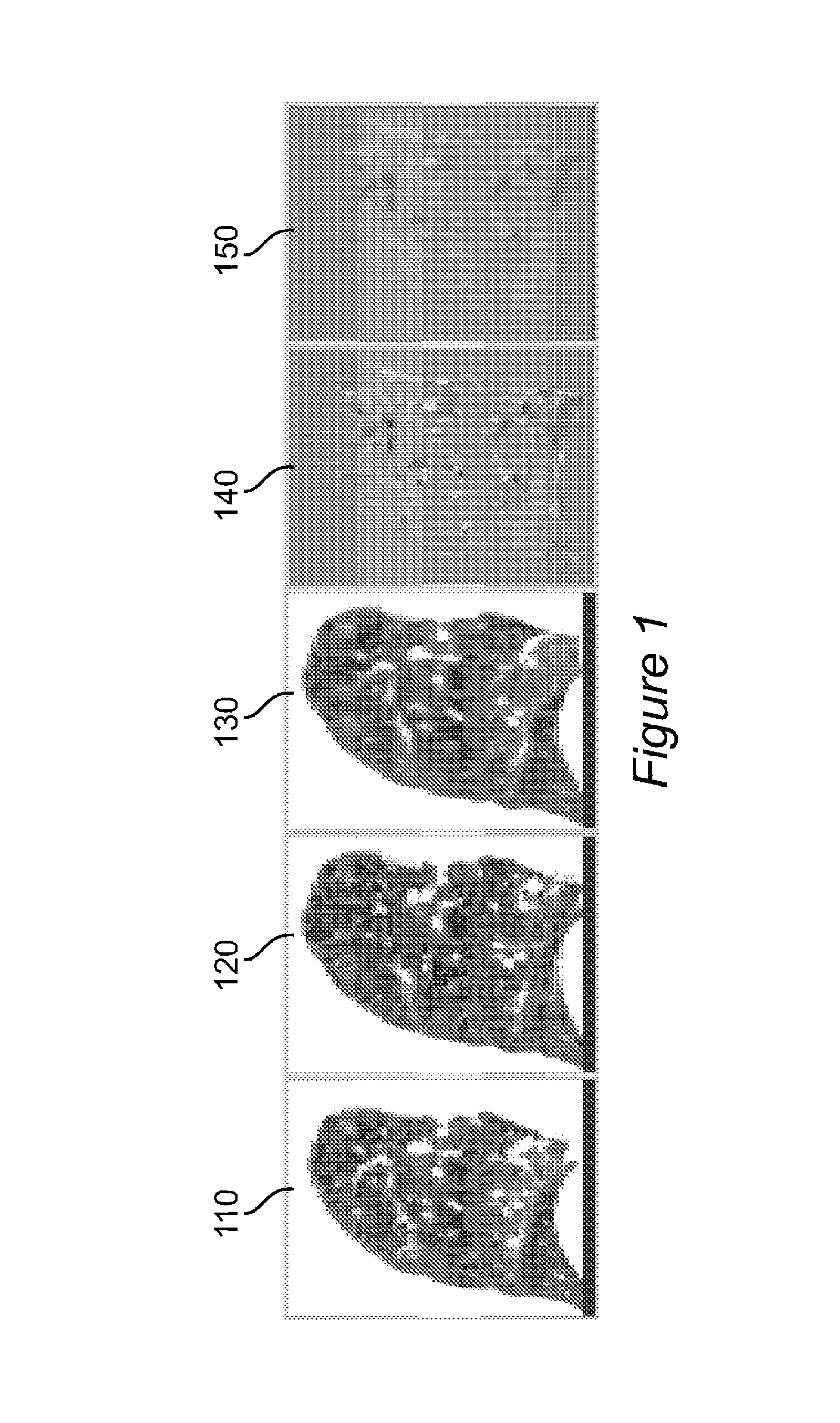Method and system for using computed tomography to test pulmonary function
a computed tomography and pulmonary function technology, applied in the field of methods and systems of determining pulmonary function, can solve the problems of significantly poorer spectral resolution than that of ct, more expensive and time-consuming than computed axial
- Summary
- Abstract
- Description
- Claims
- Application Information
AI Technical Summary
Problems solved by technology
Method used
Image
Examples
Embodiment Construction
[0010]Four-dimensional computed tomography (4DCT) acquisition methods that explicitly account for respiratory motion have been recently developed in academic and commercial settings. Similarly, deformable image registration algorithms are evolving to the point of routine clinical utility. The combination of these two emerging technologies can be used as a pulmonary function test for ventilation by assessing the density differences of the same anatomic areas of the lung from CT scans acquired at different respiratory phases.
[0011]Due to the deformation of the lungs caused by respiration, the CT scans at different respiratory phases (referred to subsequently as inhale and exhale scans) cannot be directly compared as the anatomy is in a different location in the two images. FIGS. 1a and 1b, respectively, show exhale 110 and inhale 120 images. However, deformable image registration algorithms can be applied to deform one respiratory phase to another. This is shown by the image 130 in FI...
PUM
 Login to View More
Login to View More Abstract
Description
Claims
Application Information
 Login to View More
Login to View More - R&D
- Intellectual Property
- Life Sciences
- Materials
- Tech Scout
- Unparalleled Data Quality
- Higher Quality Content
- 60% Fewer Hallucinations
Browse by: Latest US Patents, China's latest patents, Technical Efficacy Thesaurus, Application Domain, Technology Topic, Popular Technical Reports.
© 2025 PatSnap. All rights reserved.Legal|Privacy policy|Modern Slavery Act Transparency Statement|Sitemap|About US| Contact US: help@patsnap.com


